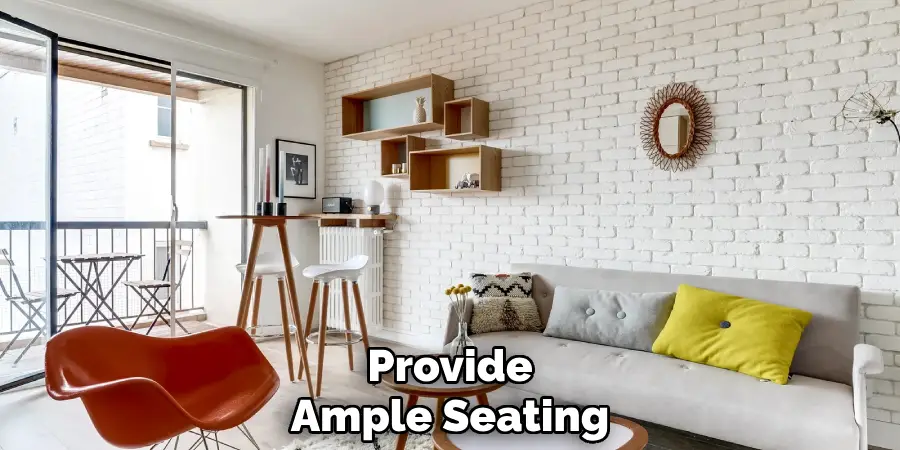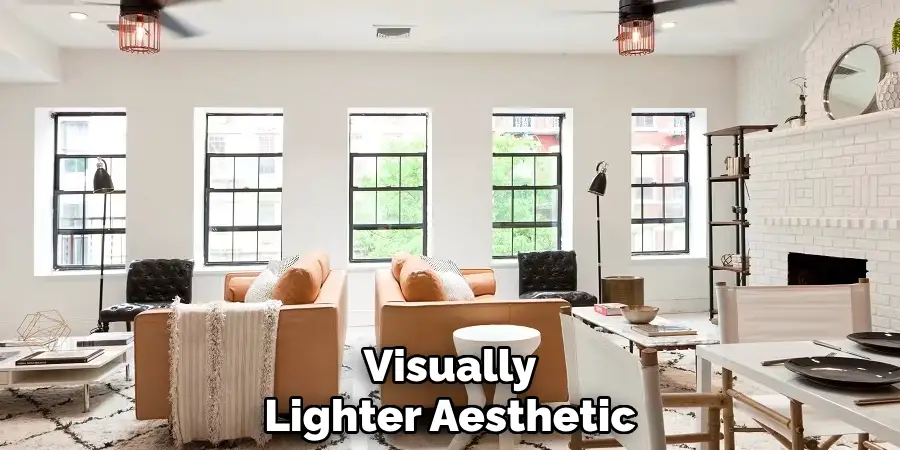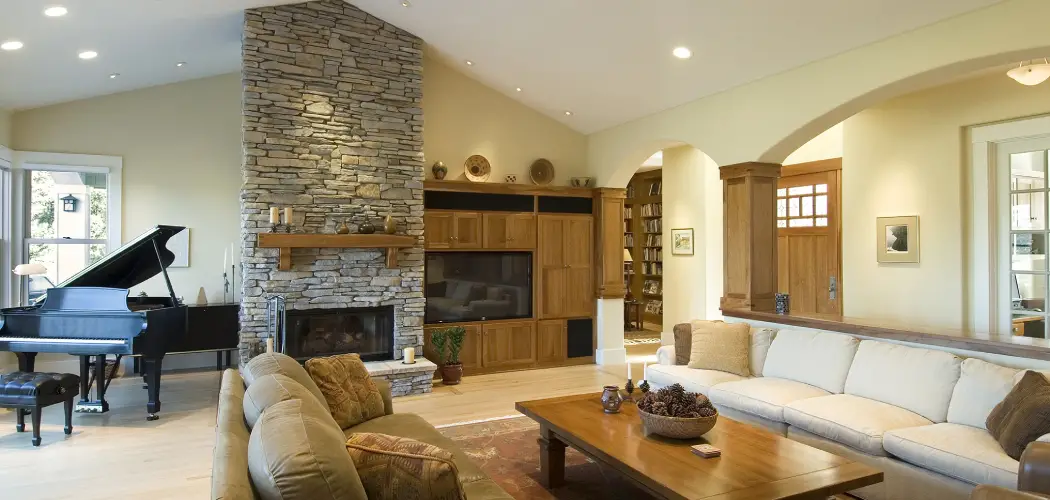Finding the right sofa for a small living room can be daunting. In limited spaces, the sofa becomes more than just a piece of furniture – it is the centerpiece of the room, setting the tone for both aesthetics and functionality. The challenge lies in selecting a sofa that maximizes comfort and style without compromising on space optimization.
With countless options available, understanding how to choose sofa for small living room is essential to ensure that you make the most out of your space. It’s about balancing a cozy seating area and a stylish statement piece that complements your interior. This guide will offer practical tips on selecting the perfect sofa, considering your living room’s size, design, and layout. Following these suggestions, you can transform your small living room into a cozy and inviting space.

Measure Your Space and Sofa Dimensions
Measuring the Living Room
To make the best decision for your sofa, begin by accurately measuring the available space in your living room. Start with the dimensions of each wall, taking note of any alcoves or architectural features that might impact furniture placement. Allow sufficient clearance to keep pathways unobstructed, ensuring walking paths, door swings, and windows remain accessible. To avoid a cramped feeling, carefully compare the floor space against potential sofa dimensions, considering any additional furniture that might need accommodation, like coffee tables or end tables.
Deciding on Sofa Placement
Next, determine where the sofa will be positioned in your living room. Placement decisions are crucial, as each option offers unique benefits and drawbacks. Positioning the sofa against a wall can help maximize floor space while floating a sofa in the middle of the room can create an intimate seating area.
Alternatively, placing it in a corner could offer a cozy nook feel. It’s beneficial to map out the layout using painter’s tape or newspapers to mark potential sofa dimensions on the floor. This practical visualization technique helps you better understand the flow of the space and ensures the sofa does not overwhelm the room.
Choosing Sofa Dimensions
The size is everything when considering the ideal sofa for a small living room. Compact or apartment-sized sofas, generally 72-80 inches long, suit smaller spaces perfectly. These sizes provide ample seating while maintaining proportion within the room. Besides length, consider the sofa’s depth; shallower sofas, measuring less than 36 inches, conserve space without compromising on comfort.
They provide ample seating support without dominating valuable square footage. Loveseats usually accommodate two persons and are an excellent alternative due to their smaller footprint. Similarly, modular sofas are adaptable and can be reconfigured based on specific space constraints, offering flexibility as your needs evolve. By carefully selecting the dimensions, you ensure your sofa not only fits but also enhances your living room’s overall aesthetic and functionality.

How to Choose Sofa for Small Living Room: Consider Sofa Styles Suitable for Small Spaces
Low-Profile Sofas
Low-profile sofas are an excellent choice for small living spaces due to their distinctive design featuring shorter backs and lower arms. This style creates the illusion of more space by drawing the eye horizontally rather than vertically, preventing the room from feeling cramped. Low-profile sofas often come in minimalist and contemporary designs, which help reduce visual clutter and add a sleek, modern aesthetic. These sofas seamlessly integrate into compact environments without overwhelming them, making them an ideal choice for maintaining a spacious and airy feel.
Slim Arm Sofas
When space is limited, selecting a sofa with slim or narrow arms can significantly maximize seating space. Large, bulky arms tend to take up valuable square footage and can make a sofa appear oversized for the room’s dimensions. Opting for armless or slim-armed sofas not only provides more seating area but also leaves additional space for decorative cushions or practical side tables. This strategic choice enhances comfort without sacrificing essential room functionality, ensuring every inch is optimally utilized.
Sofa with Exposed Legs
Sofas with exposed legs contribute to a sense of openness and space, as the design allows light to flow beneath the piece. This feature creates an illusion of a larger room by offering a visually lighter aesthetic. Pairing exposed-leg sofas with mid-century modern or Scandinavian designs amplifies the chic, space-saving look while maintaining style and sophistication. The elevated legs give small living spaces a less cluttered appearance, easily complementing contemporary or traditional interiors without diminishing their innate charm.

Sectional Sofas (Compact Versions)
Compact sectional sofas are ideal for small living rooms, providing effective seating solutions with L-shaped or chaise configurations. These designs offer the advantage of extra seating while eliminating the need for multiple separate pieces of furniture, thereby saving space. When choosing a sectional, it’s crucial to determine the right side for the chaise to align with your room’s layout and traffic flow. By selecting a compact sectional sofa, you enhance seating capacity and streamline the room’s overall arrangement, maintaining ease of movement and visual balance.
Sofa Beds and Sleeper Sofas
In small spaces, where versatility is key, multifunctional furniture like sleeper sofas offers an intelligent solution. They are particularly effective in studio apartments or rooms serving dual purposes, such as a living area and guest room. A well-chosen sleeper sofa provides comfort and utility without forsaking style. When selecting a sleeper sofa, consider options that are easy to unfold and fold back, ensuring daily convenience. By merging style with practicality, sleeper sofas present a valuable addition to small living spaces, maximizing functionality and optimizing available space.
Opt for Light Colors and Simple Fabrics
Choosing the Right Color
Lighter colors have a transformative effect on small living spaces, lending an air of openness and brightness. Soft neutrals, such as gray, beige, and white, or gentle pastels effortlessly reflect light, creating an illusion of a larger room. Integrating your sofa into the overall color scheme is vital; if your walls are painted in light shades, a sofa in a similar tone will blend seamlessly, fostering a cohesive and harmonious aesthetic. This approach minimizes visual fragmentation, giving the appearance of an uninterrupted expanse rather than a compartmentalized area.

Avoiding Bold or Busy Patterns
It’s prudent to steer clear of bold or heavily patterned sofa fabrics in compact spaces. Dark colors and busy designs can overwhelm a room, causing it to feel cluttered and cramped. If you prefer incorporating patterns, opt for subtle textures or understated small-scale prints that complement rather than dominate the room’s visual narrative. Such choices maintain the room’s spacious atmosphere while injecting personality and style in a controlled and balanced manner.
Textile Choices for Small Living Rooms
Selecting lighter and simpler fabrics for your sofa complements the streamlined look essential in small living quarters. Materials like linen, cotton, or microfiber offer an elegant yet understated aesthetic that helps the sofa blend inconspicuously within the room. These fabrics are visually appealing and practical, balancing durability and ease of maintenance. This is particularly important for sofas that see daily use or reside in households with children or pets. These fabrics resist daily wear and are easier to clean, keeping the couch looking fresh and welcoming, adding to the room’s overall charm without unnecessary bulk.

Prioritize Functionality and Flexibility
In small living spaces, prioritizing functionality and flexibility in furniture choices can make a significant difference. Modular and convertible sofas provide an adaptable solution for those who enjoy rearranging their living spaces or moving frequently. Modular sofas, composed of individual units that can be rearranged, allow you to tailor your seating area to the available space or desired configuration.
This flexibility means you can customize the layout to suit any room size or shape, and it’s particularly beneficial for adapting to new living environments. Modular sectional pieces, such as those with removable or interchangeable sections like a chaise or ottoman, maximize utility by catering to different needs and preferences. These customizable elements ensure your sofa can evolve with your lifestyle changes.
Storage options are another key consideration for small living rooms, where every inch counts. Storage sofas, equipped with built-in compartments beneath their seats, provide a clever solution for accommodating extra blankets, pillows, or books without cluttering the room. This hidden storage effectively utilizes the space under the seating area, keeping belongings organized and out of sight. Additionally, incorporating ottomans that double as storage and extra seating complements a small sofa setup, adding versatility without compromising style or space.
Multifunctional furniture is essential in optimizing small spaces, with pieces like sofa beds or recliners offering the most value for their footprint. These dual-purpose designs save space while adding essential functionality—ideal in multifunctional spaces like studio apartments or living rooms doubling as guest accommodations.
A clever combination like a small loveseat with a compact side table that serves as a coffee table enhances space usage and versatility. This arrangement creates a dynamic living area that adapts to different activities, balancing comfort, utility, and style. Embracing multifunctional and flexible furniture ensures a harmonious, practical, and visually appealing environment suitable for modern living.
Conclusion
Choosing a sofa that harmonizes style, comfort, and practicality is crucial for maximizing the potential of a small living room. You can transform your space into a functional and visually appealing haven by thoughtfully considering your specific needs and preferences. Start by accurately measuring your area to ensure the perfect fit. Explore different styles, such as sectional or sofa beds, that offer flexibility and multifunctionality.
These choices can significantly enhance room functionality, providing seating, sleeping, and even storage solutions in one. Embrace the palette of light colors and simple fabrics to maintain a spacious feel. The journey on how to choose sofa for small living room doesn’t have to be daunting. Take your time to analyze aspects like color, size, and functionality to find a piece that resonates with your lifestyle. Ultimately, the right sofa will complement the room’s design while adding value and comfort to your everyday life.
About
Angela is the chief editor of Indoorense. She began her career as an interior designer before applying her strategic and creative passion to lifestyle and home.
She has close to 15 years of experience in creative writing and online content strategy for housekeeping and cleaning,home decorations as well as other efforts.
She loves her job and has the privilege of working with an extraordinary team. She lives with her husband, two sons, and daughter in Petersburg. When she’s not busy working she spent time with her family.

